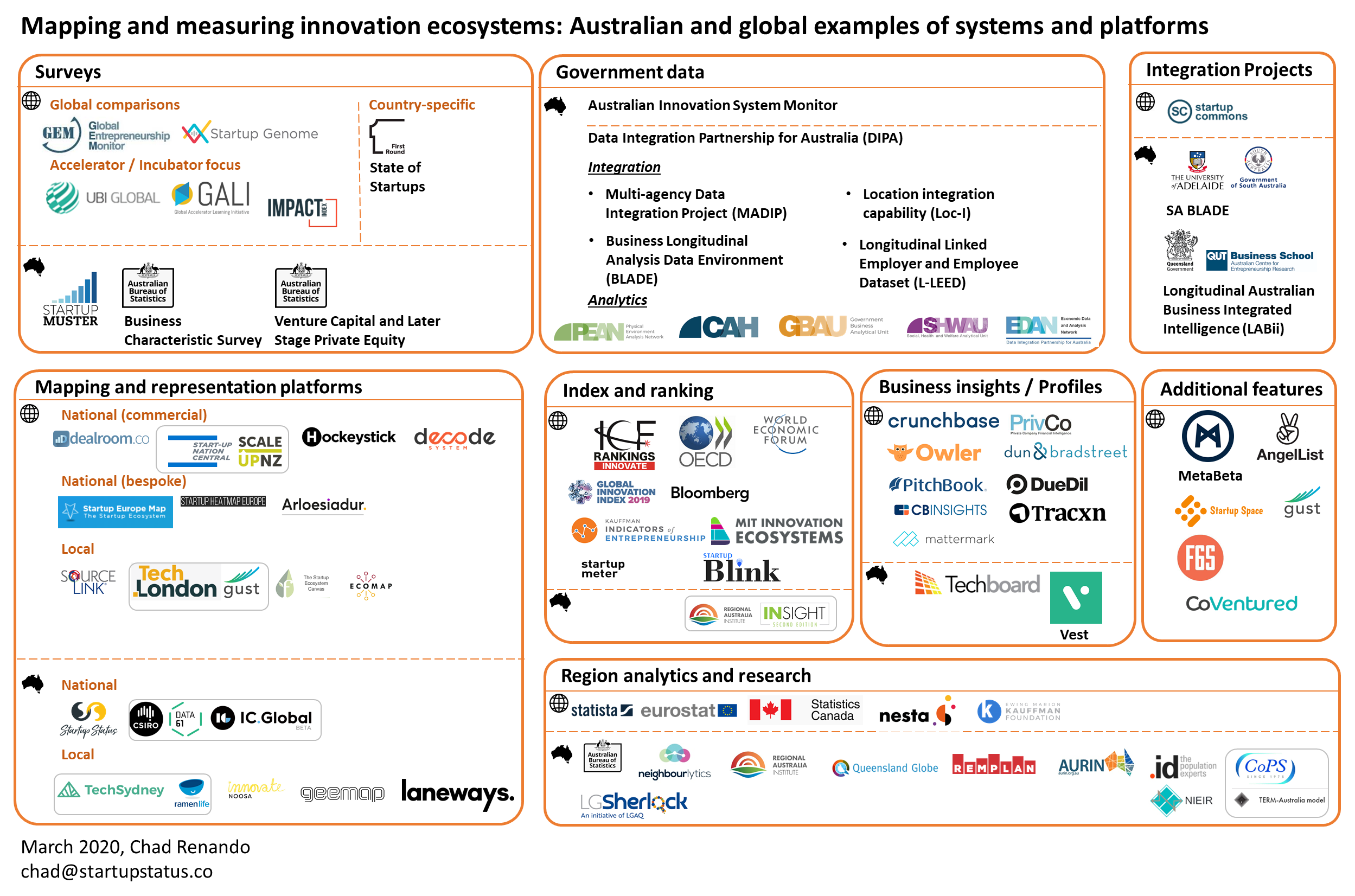A map of mapping platforms – behind the scenes
I published a report today on systems and platforms used to map entrepreneurial ecosystems. You can read the full copy here.
The draft had been sitting in the queue for about a year and I have been test-driving the map for a few months in webinars and with colleagues. The report is a bit of an anomaly. On the one hand, it is super-niche. You don’t necessarily find people on the train who are interested in software platforms and surveys that measure entrepreneurial ecosystems. On the other hand, it is likely the first to capture this set of information.
To put a capstone on the report, I figured I would write up the journey that led to this point.
I found the origins in an August 2017 PowerPoint presentation of market research. The initial grouping was into three categories: those for public view, back end systems for hubs and programs, and platforms to be used by startups.
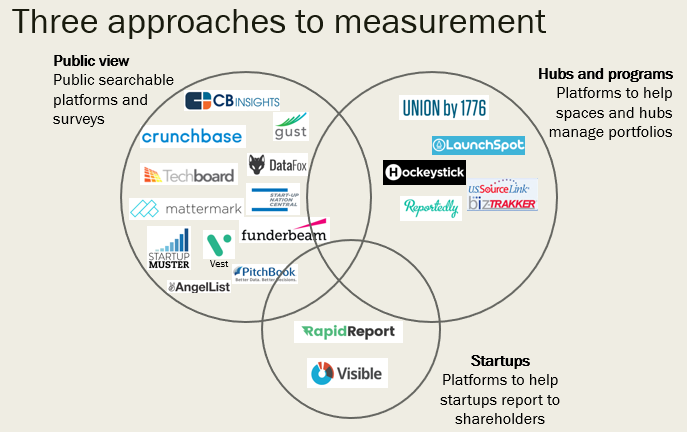
By March 2018 I had refined the list to Platforms, Surveys and reports, and Portfolio management systems, as well as identified those that were global and those in Australia.
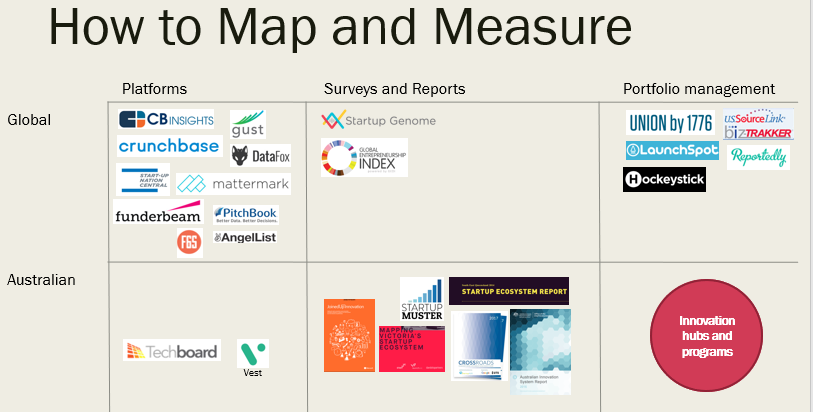
By August 2018, a year after that initial PowerPoint, we had built the Startup Status platform and it was being used to collect and analyse data from hubs across Australia. At the time I was working at the Office of the Queensland Chief Entrepreneur (OQCE). My notes from a report mid-2018 state:
- Data from 14 hubs and programs has been collected and includes over 1,300 individuals and 900 organisations. These include around 300 companies that can be considered a “startup”.
- Lessons encountered in the approach include the time required to clean the data and barriers to receiving data from the hubs (time, privacy concerns). Development has been conducted as a side entrepreneurial project.
I continued to analyse platforms in the market with one breakdown from August 2018:
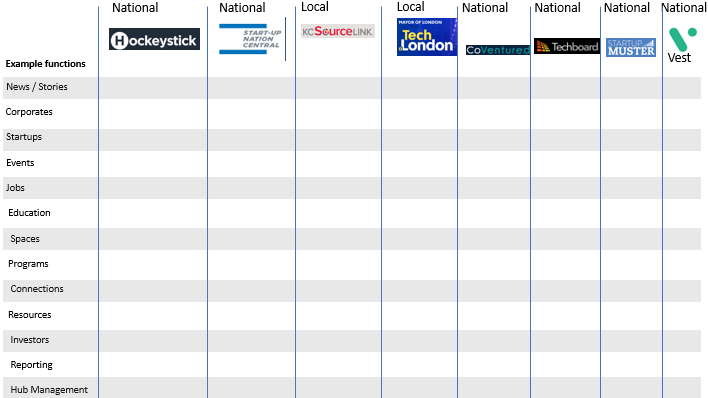
By January 2019 I had left the OQCE to conduct a 12,000 km research tour across Queensland for my PhD. I also visited every state and territory on a contract with the federal government to measure the impact of hubs and programs. It was an incredible experience, filled with opportunities, challenges, and great relationships.
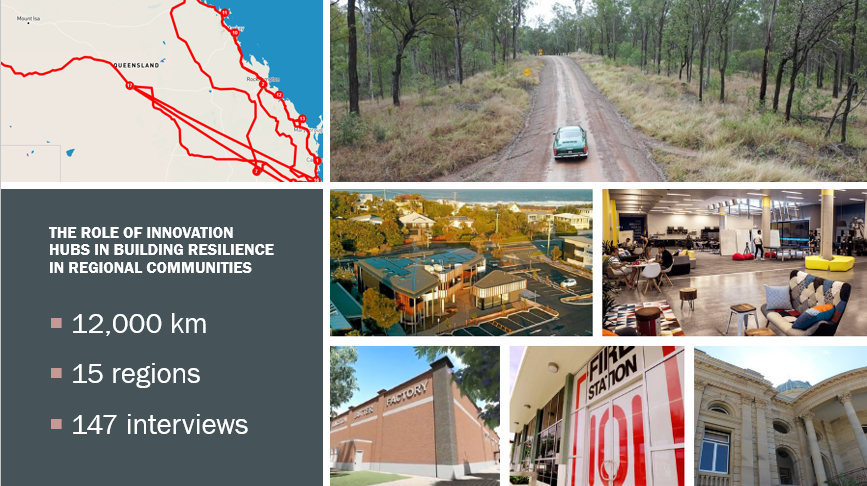
By June 2019, I was in the middle of my research write-up, transcribing interviews and making sense of what I heard. I was also writing up the lessons from the federal program. From notes in my final report:
- The process identified barriers to engagement including: competing priorities, existing measurement approaches, internal competitive platforms, and alignment with wider institutional and state approaches.
- Recommendations for overcoming barriers include the establishment of a simplified and mandatory central measurement approach for recipients of all government investment.
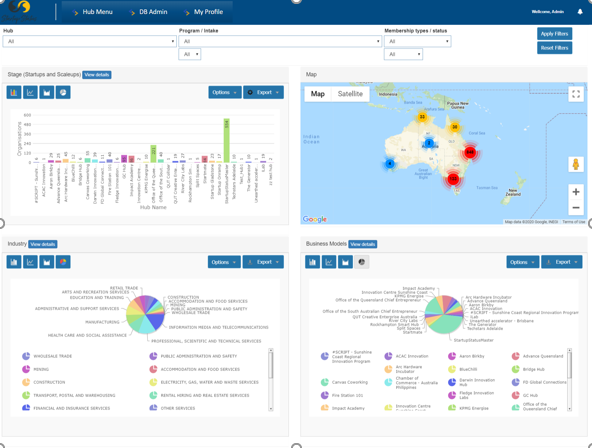
The experience over the past three years has made it clear that no single private market platform will get us to efficient and effective measurement of the systems that support entrepreneurial activity. Even though I set Startup Status up as a not for profit, I could never be altruistic or fast enough to meet the market and political demands of the challenge. I am open to this being my own limitations of personality or capability, but observing other global situations gives me confidence that the challenges are shared.
Which leads us to today – working with a cross-government and cross-university team pursuing a coordinated national approach to entrepreneur measurement. I am also grateful for my international connections through the Kauffman Foundation and the Global Entrepreneurship Network where I can contribute to and learn from others. No single organisation or individual can solve complex social challenges. It is about the outcomes not the individual.
Startup Status continues to collect data and map the Australian ecosystem. I also maintain development of the back-end hub portfolio management interface as a potential integration option. But I am pleased to contribute towards a larger picture that is so much larger than any one person or organisation.
